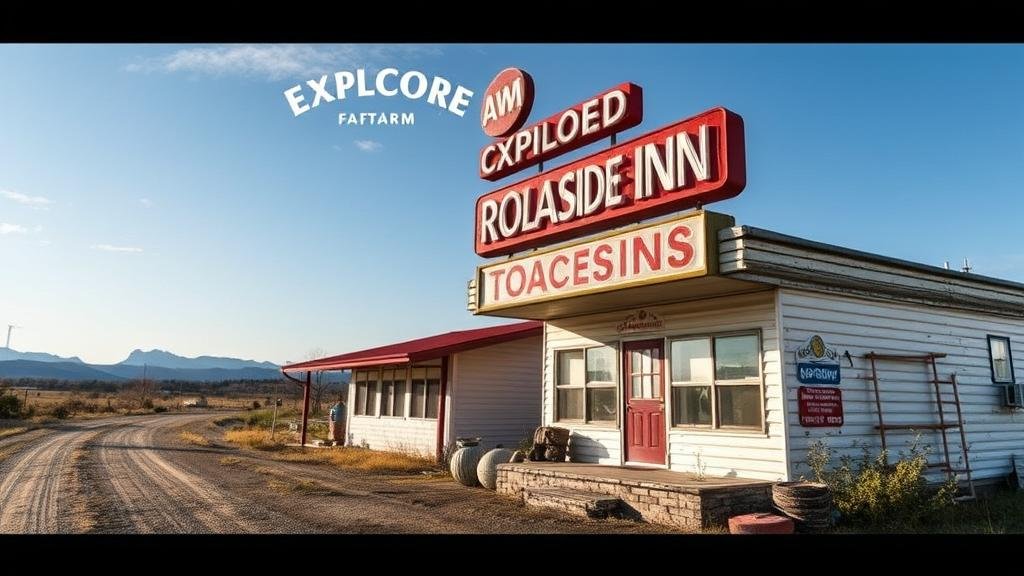Exploring Abandoned Roadside Inns for Travel Relics and Hidden Caches
Exploring Abandoned Roadside Inns for Travel Relics and Hidden Caches
Abandoned roadside inns represent a unique intersection of history, culture, and geographical storytelling. They often encapsulate the evolving nature of travel and societal values over the decades. This article delves into the significance of these structures, the treasures they may hold, and the motivations driving modern explorers–often referred to as urban explorers or relic hunters–to investigate them.
Historical Context of Roadside Inns
The emergence of roadside inns can be traced back to the proliferation of automobiles in the United States during the early 20th century, particularly post-World War II. From the 1950s onward, the growth of the interstate highway system catalyzed a boom in travel-related commerce, with countless inns established to cater to transient travelers.
As rapidly as these establishments appeared, many became obsolete with changing travel patterns and preferences. By the late 20th century, a significant number of these inns were abandoned, leaving behind a rich tapestry of relics that document a bygone era. For example, the remnants of the “Motel Era†are epitomized by establishments such as the now-abandoned Melody Inn in Macon, Georgia, which operated from the 1960s until its closure in the 1990s.
Travel Relics: What Lies Within
Within these abandoned inns, explorers often unearth an array of travel relics ranging from vintage signage to outdated business records. e artifacts not only provide insight into the hospitality industry of the past but also serve as cultural time capsules. Common finds include:
- Old room keys and registration cards, which offer qualitative data on customer demographics and travel trends.
- Period decor, such as furniture and artwork, that reflects the stylistic choices of the era and regional influences.
- Menus and promotional materials, which illuminate past culinary trends and marketing strategies.
For example, during an exploration of an abandoned Route 66 motel in New Mexico, relic hunters discovered a collection of menus that highlighted the shift from traditional American diners to more diverse culinary offerings in the 1980s, thus illustrating a significant cultural transition.
Hidden Caches: The Thrill of Discovery
Beyond travel relics, many explorers are drawn to these abandoned sites due to the prospect of finding hidden caches. These might include personal belongings left behind by former guests, or even forgotten valuables. Such finds can ignite a detective-like thrill, often evaluated for their historical significance or monetary value.
The Urban Exploration Movement
The urban exploration (urbex) movement has surged in popularity over the last two decades. This underground culture emphasizes the exploration of abandoned buildings and sites, valued for their architectural uniqueness and the stories they may tell. Explorers generally operate under a set of ethical guidelines, such as:
- Do not vandalize or disrupt the sites.
- Always prioritize safety and legality in explorations.
- Document findings respectfully, advocating for preservation and historical recognition.
Notably, the story of the former Walter and Mary’s Coffee Shop, once a roadside inn in Oregon, gained attention after documentarians captured explorers who uncovered not just artifacts but eerie stories of past patrons, suggesting ghostly tales that create a rich narrative tapestry surrounding the exploration.
Conservation and Preservation Concerns
While the exploration of abandoned roadside inns can yield fascinating insights and relics, it is crucial to approach this practice with a sense of responsibility towards preservation. As these sites decay, stakeholders including historians, local governments, and urban explorers are increasingly focusing on how to preserve rather than exploit their histories.
According to the National Trust for Historic Preservation, nearly 90% of American historic places are at risk of demolition or neglect. This statistic underscores the importance of recognizing the cultural value embedded within these structures. Community-driven initiatives can help protect these sites, transforming them into historical landmarks that can educate future generations about their significance.
Conclusion: The Call to Action
Exploring abandoned roadside inns offers more than just the prospect of travel relics and hidden caches; it illuminates the stories of our past, preserving them for future generations. For those interested in engaging with history hands-on, consider the following:
- Research local abandoned sites and understand their history before exploring.
- Connect with organizations that advocate for preservation efforts.
- Document and share findings in a way that promotes awareness and respect for these historical sites.
As we navigate the complexities of modernity, preserving the legacies of these once-bustling inns can serve as a poignant reminder of our communal journey through time.



